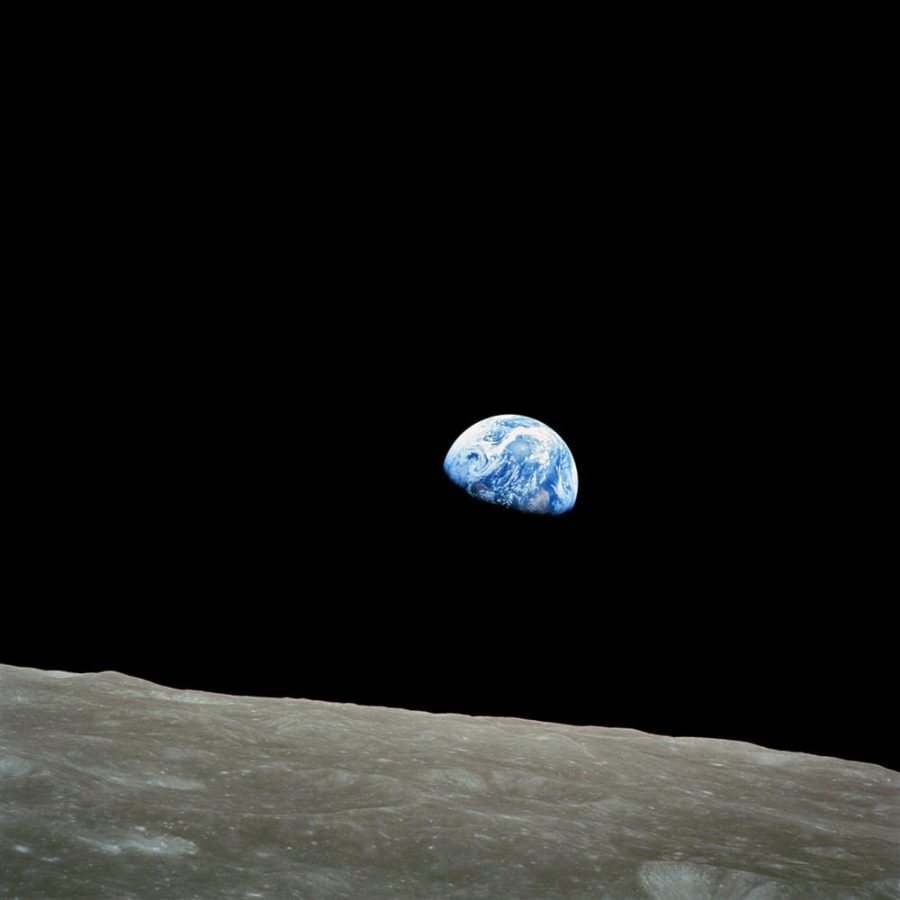Space Tourism: A Far-Out Idea?
Imagine blackness all around you. Silence, awe, and fear of the unknown hang in the stagnant air. Suddenly, you see a glimpse of light. It gets brighter by the millisecond, until you realize where it is coming from. You are staring down, mouth gaping wide, at your home, everyone’s home. Until now, it is the only place you have ever known: planet Earth. You are experiencing life like an astronaut. You are an astronaut. You are defying all laws of gravity and physics. You are in space.
Space travel is nothing new to the human race. There was the Soviet Satellite Sputnik 1 in 1957, the Apollo 11 moon landing in 1969, a Mars rover launch to come this July, and many more instances of extraterrestrial exploration. But what about the majority of the world’s population that will never get to see the wonders of space? Since space exploration began in the 1950s, only astronauts, spaceships, and rovers have ever exited Earth’s atmosphere. That is all about to change. Companies such as World View and Virgin Galactic are working on ways to hold commercial space flights available to the general public. “I think space tourism is a good idea because it is educational and a once in a lifetime opportunity,” commented freshman Clarissa Charpentier.
So, how exactly will space travel work? According to The Verge website (theverge.com) in an article entitled “Inside World View, the Company That Wants to Take You Into the Stratosphere With a Balloon,” those who choose to experience World View’s Voyager program will be lifted 19 miles into Earth’s atmosphere, specifically the stratosphere, getting to see the curvature of the Earth. Passengers will board a capsule attached to a large balloon (like a hot-air-balloon built for space). The capsule will have a bathroom, a bar, and even Wi-Fi to ensure the most comfortable flight possible. Flights are scheduled to begin in a few years, though the company has provided no exact date.
For those who will be flying with Virgin Galactic, passengers, clad in futuristic spacesuits, will board a rocket ship after three days of training. According to Virgin Galactic’s website (virgingalactic.com), the rocket will be launched about 60 miles upwards, taking people outside of Earth’s atmosphere, where they will feel weightless for a few minutes before gliding back home. Flights were scheduled to begin this year, but current global events will most likely delay them.
Now, to address the big elephant in the room: how much do these trips to space cost? World View currently charges $75,000 per seat on one of its capsules, while Virgin Galactic charges $250,000. “I’ve never actually heard of [space tourism], but it sounds very exclusive to the rich,” stated freshman Grace Benedict. “Personally, I don’t think I could ever do something like that, but it could be cool,” Benedict added. While these prices are definitely unreasonable for the majority of the population, one must take into account all of the materials needed to build the vehicles as well as the cost of rocket fuel. In fact, these prices are only a small fraction of what it costs for NASA to launch one of its rockets; according to Futurism’s website (futurism.com) in an article entitled, “Elon Musk: SpaceX Launches Will Cost 1% of Current NASA Launches,” NASA spends an average of $152 million per launch, and it spent a whopping $152 billion on the Apollo 11 moon landing.
While Virgin Galactic focuses only on space tourism, World View also uses its space technology for scientific research. The company developed the Stratollite, a satellite that uses similar balloon technology as its space travel capsules to float in the stratosphere. These Stratollites are equipped with sensors and cameras, and they can go into space unmanned. One use for these Stratollites is weather research. Using their sensors, they can detect changes in the atmosphere such as wind speed, warning people of natural disasters well before they occur. Also, in the event that humans ever establish colonies on another planet, the Stratollites can be used as an intergalactic food delivery vehicle, as one sent a KFC chicken sandwich to the edge of space in 2017.
But, while space tourism indeed has the potential to bring about much positive change, there is so much about space that humans do not know. “I think space tourism would be an interesting option to explore,” freshman Jaiden Moreno stated, “but I’m not so sure that I would want to actually go to space. It sounds absolutely horrifying.” In fact, humans have only explored 4% of the galaxy. Compare that to the 5% of the ocean that has been scoped out. Humans know as little about the oceans as they do about space. This point brings up the popular debate of whether people should focus on discovering more about life here on Earth and trying to preserve it before taking steps to explore the even more unknown territory of space.
Whether it is capsules and rockets taking regular people into space, satellites helping to detect natural disasters, or sending KFC to the far reaches of the galaxy, space technology has rapidly advanced within the last couple of years. Hundreds of years ago, people could only gaze up at the stars and imagine what life was like outside of planet Earth. Now, one does not have to imagine any longer. The days of Star Trek, Battlestar Galactica, and Star Wars are over. Space travel is no longer a fantasy; it is now an ever-present, thrilling reality that will impact the course of world history forever.

I am a member of the Class of 2023 as well as one of the editors-in-chief of the print edition of Horizon. I enjoy reading, playing the violin, and using...























